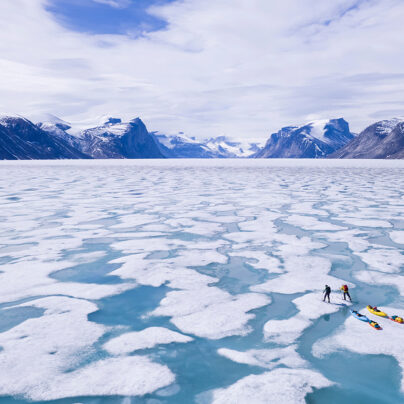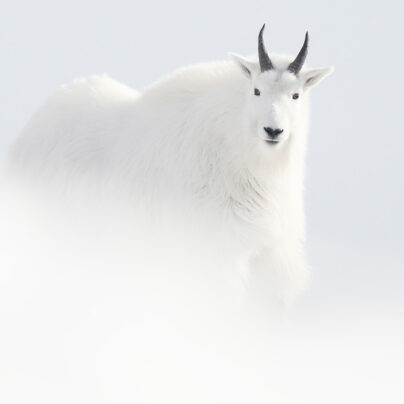Cascade Comradery
The Final 250 Miles Before the Monument, Pacific Crest Trail
Sean Jansen
I was shaking to the core, not from the cold but just from completion. All I wanted to do was just run to my tent, mummify myself in my sleeping bag and weep, but I had five miles to do in an hour unless I wanted to wander around trying to find camp with a nearly dead head torch.
I was standing on the ridge above the monument, engulfed in torrential, horizontal rain and sleet, soaked to the core. My hiker companion Tommy, ‘Walkie Talkie’, was a way back and still stumbling after celebrating at the monument. And the surrounding yellow larch trees weren’t going to offer any comfort – I threw up on one the night before last. There was about an hour before dark with a little over five miles to hike until we got back to camp, but I was nervous because I couldn’t quite visualise where we set up our tents. The prospect of trying to find them in the dark with a sideways downpour was nothing short of horrifying.
Rain gear just simply does not work in weather like this. Especially ultralight raingear that has been carried for nearly six months, crumpled and unwashed, stuffed in to and out of your backpack every day. I was still shaking to the core, not from the cold but just from completion. All I wanted to do was just run to my tent, mummify myself in my sleeping bag and weep, but I had five miles to do in an hour unless I wanted to wander around trying to find camp with a nearly dead head torch.
I knew that if I slowed my pace I would put myself at risk from hypothermia. But with my head down and my head lamp still dimly guiding the way, I made it back those five miles and found the side trail to our tents, which huddled dry and inviting beside a small grove of trees. I peeled off my wet clothes and jumped shivering into my sleeping bag, then started to yell for my companion. ‘Walkie!’ I kept yelling for what felt like a long time.
He made it, but he was slurring his words from the frigid temperatures and his head lamp was nearly dead.
‘I could see the light from your tent. Man, I’m destroyed.’
We curled into our tents and didn’t say another word to each other for the rest of the night, although neither of us slept – not from the overwhelming feeling of completion, but from the hurricane-like winds slapping our tents and the deep moan from the trees nearby, not to mention the tossing and turning of a billion thoughts through our minds like a scene from a horror film.
It all started with a fresh resupply two weeks before. Sitting in front of the Chevron station in Snoqualmie, Washington, having already packed, I watched my fellow hiker-trash companions pack their belongings around the public picnic table. With 250 miles left in our saga of footsteps and near-famine, my stomach churned. I saw sombre faces on my hiker companions – they were realising that the trail was now only about two weeks long. And maybe I was seeing some of these faces for the last time.
The start of the PCT back on the border of California and Mexico was this heart-warming enchantment, a trail to your dreams; a golden pathway if you will. But now, sitting here in Northern Washington, with only a sliver left after all you’ve done, is something of a catch-22.
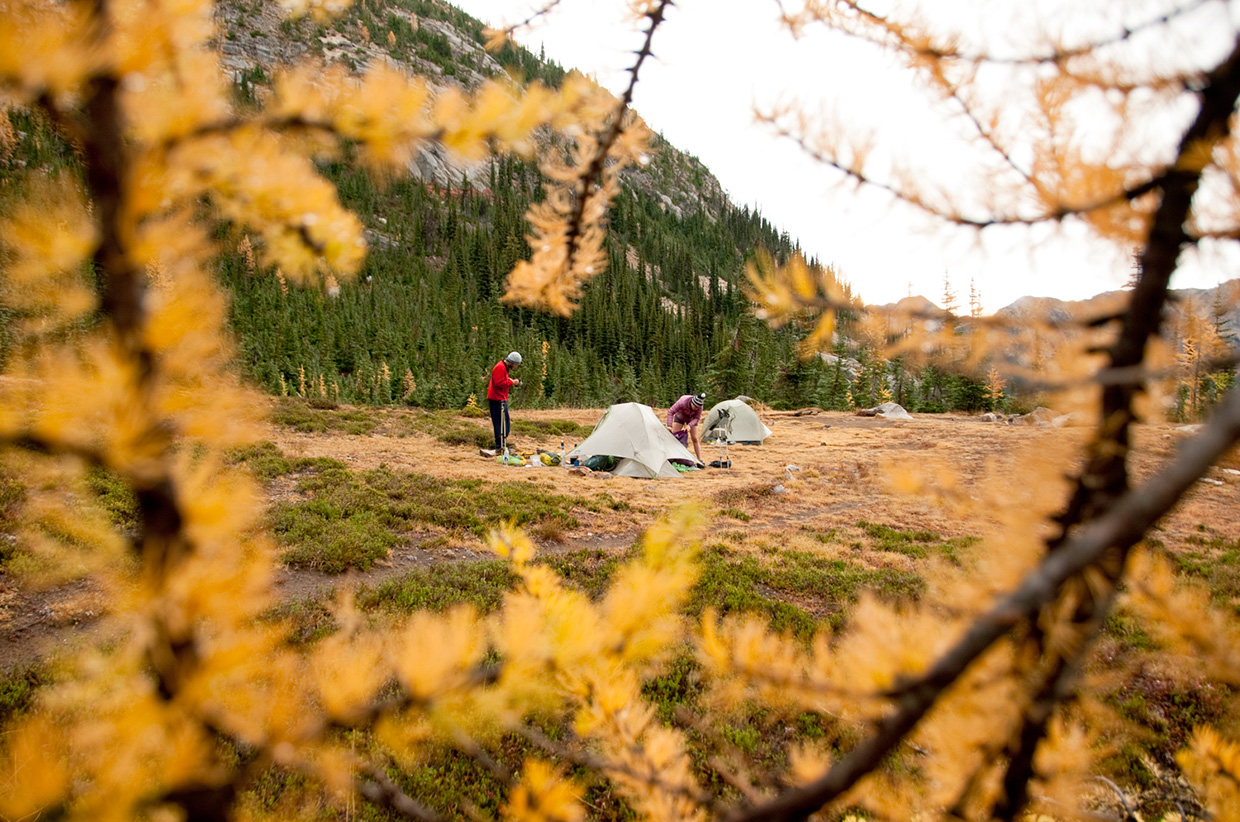
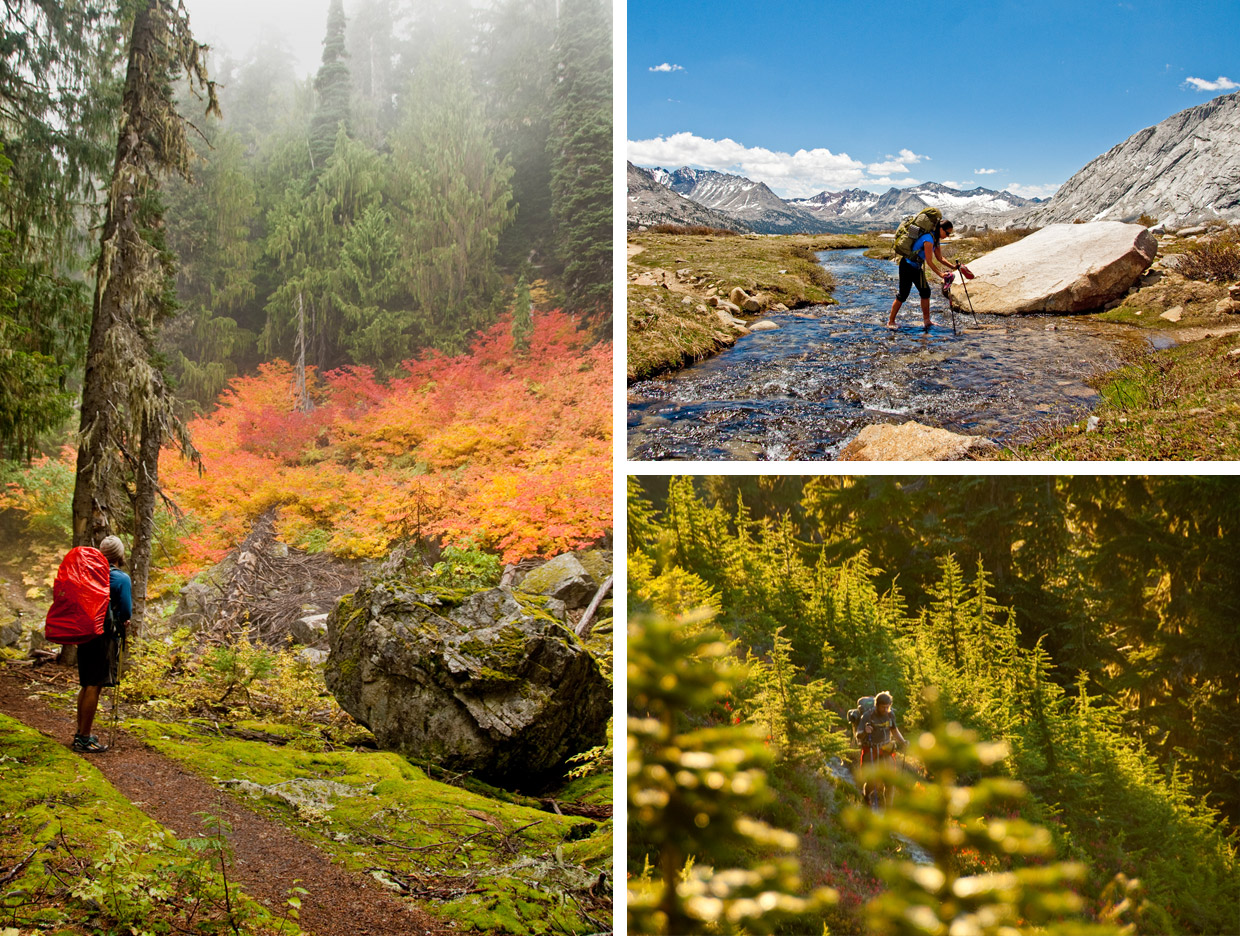
This part of the life-changing journey was without question the hardest of all, an emotional tug of war. I’ve known some of these companions for just a few weeks, while some I’ve known from the start, 2,400 miles back, two states ago. Walkie was one I met in the Sierra. And everyone says that falling in love with someone on trail takes little to no effort – it just happens. You are all there with the common goal of reaching that monument no matter what. Battered physically, mentally and emotionally, but on our two feet pushing northward, wanting that monument, proving to ourselves and those that follow back at home that the last five months have been worth it.
Before our arrival into the North Cascades, we’d heard the region was a bit like the Swiss Alps. However, there is one thing I vividly remember about the Cascades more so than any other part of the trail. Since Mexico, it had been a roller coaster of uphill and down. Some of the climbs were mellow; some of the descents were knee shattering. But there was nothing more gruelling than a Cascade climb. A 20-mile day meant at least 6,000ft of climbing as well as that in descent. It made for unfathomable views, but exhaustion beyond anything I thought possible.
The scenery was always worth every huff and puff, curse word, and muffled grunt while attempting to breathe. While hiking upward, all you saw was the trail in a green tunnel of trees and your friends pushing in front of you. There were always two climbs a day – there had to be if we were to accomplish our goal of reaching the monument with the little weather window we had.
Stress was a new player on trail. At the start, the feelings were more of joy and freedom, release from the daily grind of nine-to-five and bills; the reasons why most of us started the trail to begin with. This new stress, however, at the top of a 3,000ft climb, with a ticking time bomb of fast-approaching winter, was not the most enjoyable. Goodness me the beauty made up for it, though. Every climb led you to a new shape of granite with spires shooting up as if they were blades stabbed from the core of the earth, penetrating outward, always accompanied by a lake or steam – no advertising necessary to entice us to stay and collapse after a day of endurance roller coasting.
Positivity was often a hard concept to grasp. There are variables that one can’t foresee, such as: accidentally leaving your solar panel on a log at the bottom of a climb that you just did; bending your hiker pole doing the same routine you’ve been doing from the start; unexpected rain; Ibuprofen simply deciding that it doesn’t want to work any more; and getting one of the worst sicknesses of your life 100 miles before the monument.
Every climb led you to a new shape of granite with spires shooting up as if they were blades stabbed from the core of the earth, penetrating outward, always accompanied by a lake or steam – no advertising necessary to entice us to stay.
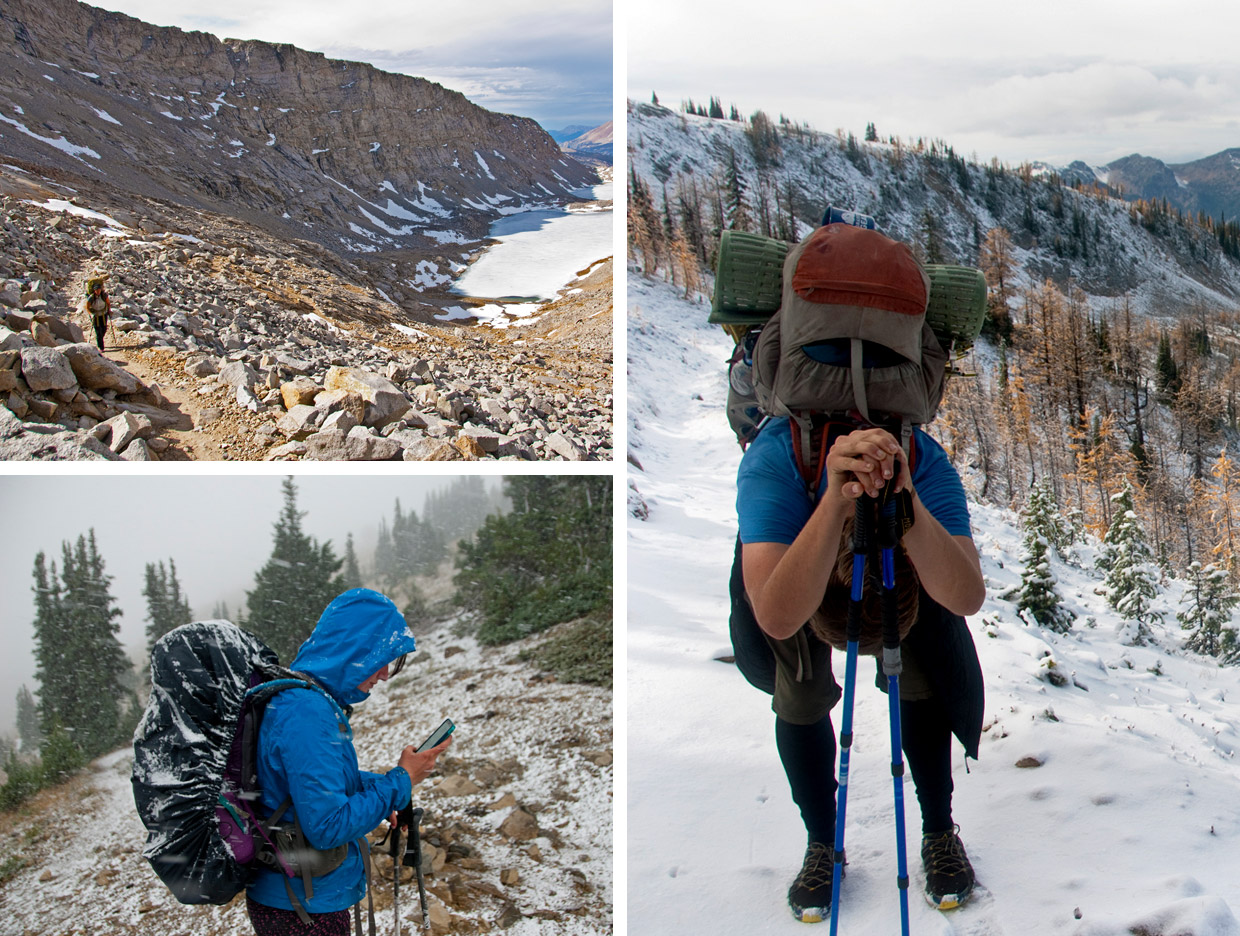
My nightmare of a sickness on trail became harsh reality. What should have only taken a day to hike to Rainy Pass took three, stumbling, pausing with my head between my legs, and screaming curse words at the top of my lungs from frustration.
Lake Chelan in the North Cascades National Park was a beacon in a storm. I thought I was lucky for getting sick at a resupply, because I couldn’t imagine what it could be like on trail to be firing at both ends while also trying to get miles done. When I woke the next day thinking I was feeling better, I decided to hit the trail; it was only 20 miles to Rainy Pass and our last real resupply before the monument. But, well, I wasn’t feeling any better. My nightmare of a sickness on trail became harsh reality. What should have only taken a day to hike to Rainy Pass took three, stumbling, pausing with my head between my legs, and screaming curse words at the top of my lungs from frustration. Walkie hiked on to town without me while I lay and rested, praying for health.
I made it to the highway to hitch to town, feeling better. Getting to a town was such a luxury that we all took advantage of what we could before hitting the trail again. At this stage, a large pizza, bottle of red, and a room at a hostel made us feel like royalty. We created what could only be the most legendary resupply any thru-hiker has ever done, packing items that one never thought possible or smart to pack: whiskey, wine, champagne, fried chicken, and icing (just to name the popular items). But despite all the comfort food and drink in the world, that didn’t mean the weather wanted to comfort us as well.
Accepting that we were going to have to finish in the rain was a real let-down. We were already seeing our friends’ photos on social media, who had finished just days or hours before in nice sunny weather. The long-term forecast was questionable too, so we had to do what we’ve always done since mile one: put our heads down and hike.
It rained all day long. And it turned out that my sickness never really went away. The spoonful of icing I had shortly after dinner was projectiled and made an emergency landing on one of the beautiful yellow larch trees. We were approximately 60 miles before the monument, and once there, we had two possible exit strategies: cross into Canada through Manning Park, or hike back 30 miles to a dirt road and hitch back. Walkie and I decided to hike back after the monument. It seemed like a quicker way out despite being another full day on trail.
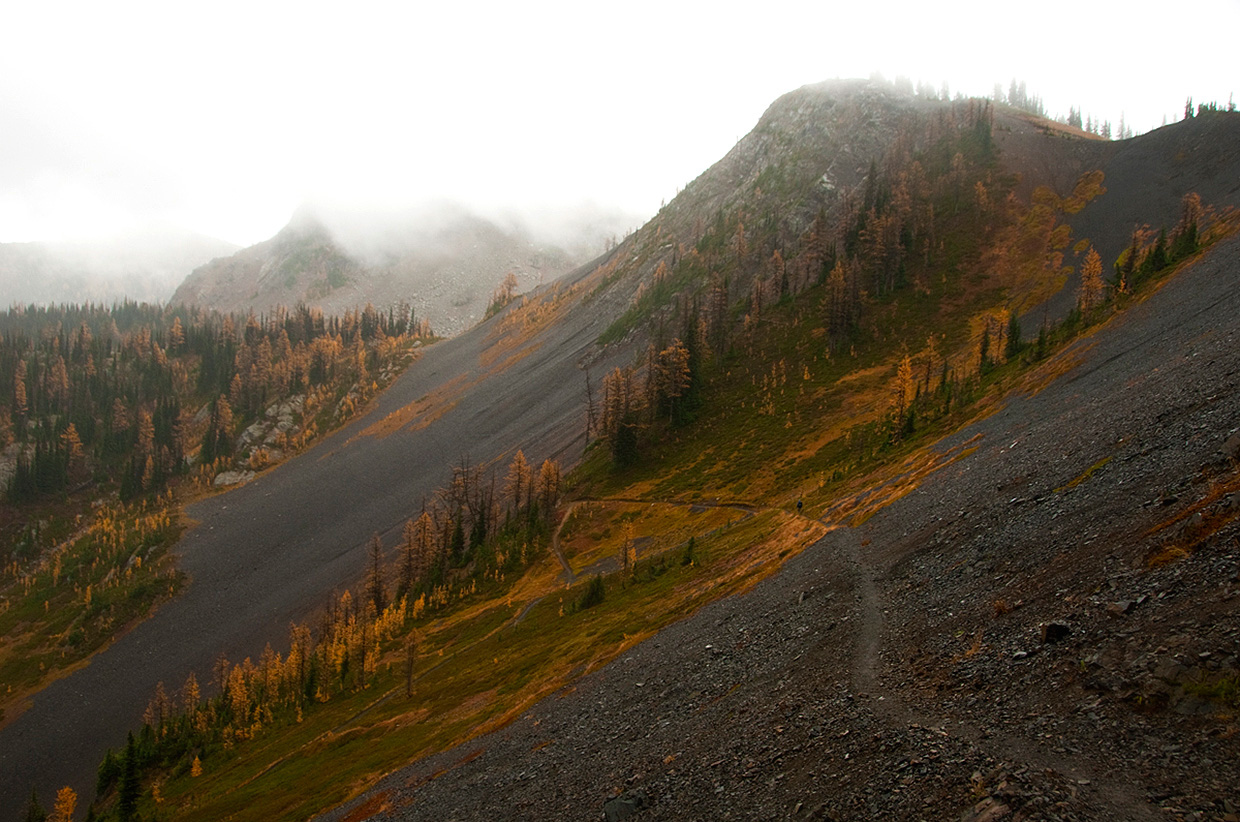
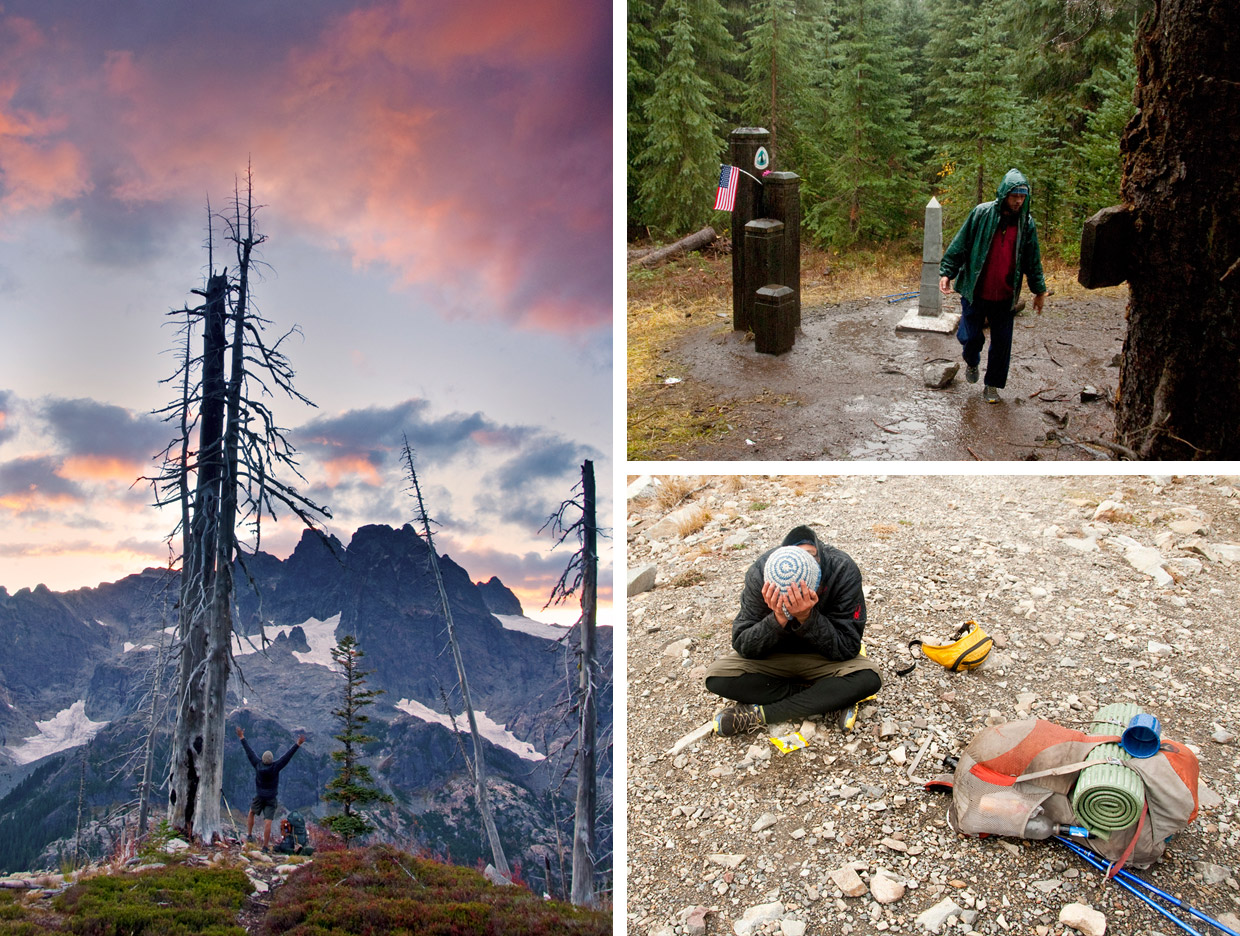
The rain was incessant on the final day. The last miles to the monument unfolded in slow motion. I was already coming to tears as I walked in torrential rain, hours from completion, and we said nothing to one another for a while on our descent to the monument. I heard every single raindrop and footstep. There was a clearing up ahead with a switchback; once Walkie got there, he turned and looked at me, jumping up and down with his hiker poles thrown up in the air saying, ‘I can see it, I can see it!’ He then bolted and ran the 50 yards to the monument. I saw it and burst into tears, just standing at the switchback.
Slowly, I walked closer. It seemed that every footstep took an enormous amount of energy, and once I reached out to touch it, I couldn’t help but break down further. I ran over and gave Walkie a massive hug with backpacks on, not caring at all about the non-stop rain. I threw my pack aside and stood there straddling the U.S. and Canada border in the downpour, just letting it engulf me, realising that it was all over.
After we made it back to our camp and eventually hitchhiked back to town, Walkie and I parted ways. He went back home and started a family and I decided to head to a stretch of coast along California and call it home. In fact, everyone went their separate ways shortly after finishing. But everything is different in the most amazing way. From the simplicity of a coffee shop, to making yourself breakfast with an actual stove, the appreciation and gratitude that I learned from hiking the Pacific Crest Trail is something I’ll forever be grateful for. I miss terribly all the stars that I hiked and laughed with. From struggling to climb Forester Pass in the Sierra to laughing over poop conversations, the other thru-hikers on this trail are the only reason I was able to finish it myself.
But what I thought would be the most depressing thing about finishing turned out to be one of the greatest blessings. I may not see the companions that I spent time with on trail, but we all stay in contact. The joy of a simple email or message can shoot even the dullest day into the brightest, and that is without question the most important gift the trail gave me: the memory of comradery.
I set off from Campo, California on April 13th at around 2.00pm. I finished the trail on October the 10th at 1.20pm. Five months and 27 days, or 180 days total; 2,650.10 trail miles, 2,781.16 total miles hiked, 253 trout caught, 46 passes hiked over, hitchhiked 39 times, lost 34 pounds, got 27 days of rain, took 22 showers, used 15 fuel canisters, stayed in 11 hotels, eight campgrounds, took seven buses, got snowed on six times, went through five pairs of shoes, saw three bears, climbed three mountains, stayed in three houses, two days below freezing, and one life-changing adventure.
Sean Jansen is a Photo Journalist based in Bozeman, Montana. He specializes in capturing the spirit of outdoor adventure both on and off land. Sean hopes to continue documenting where his own two feet take him and inspire others to do the same along the way.
Website: jansenjournals.com
Instagram: @jansenjournals




